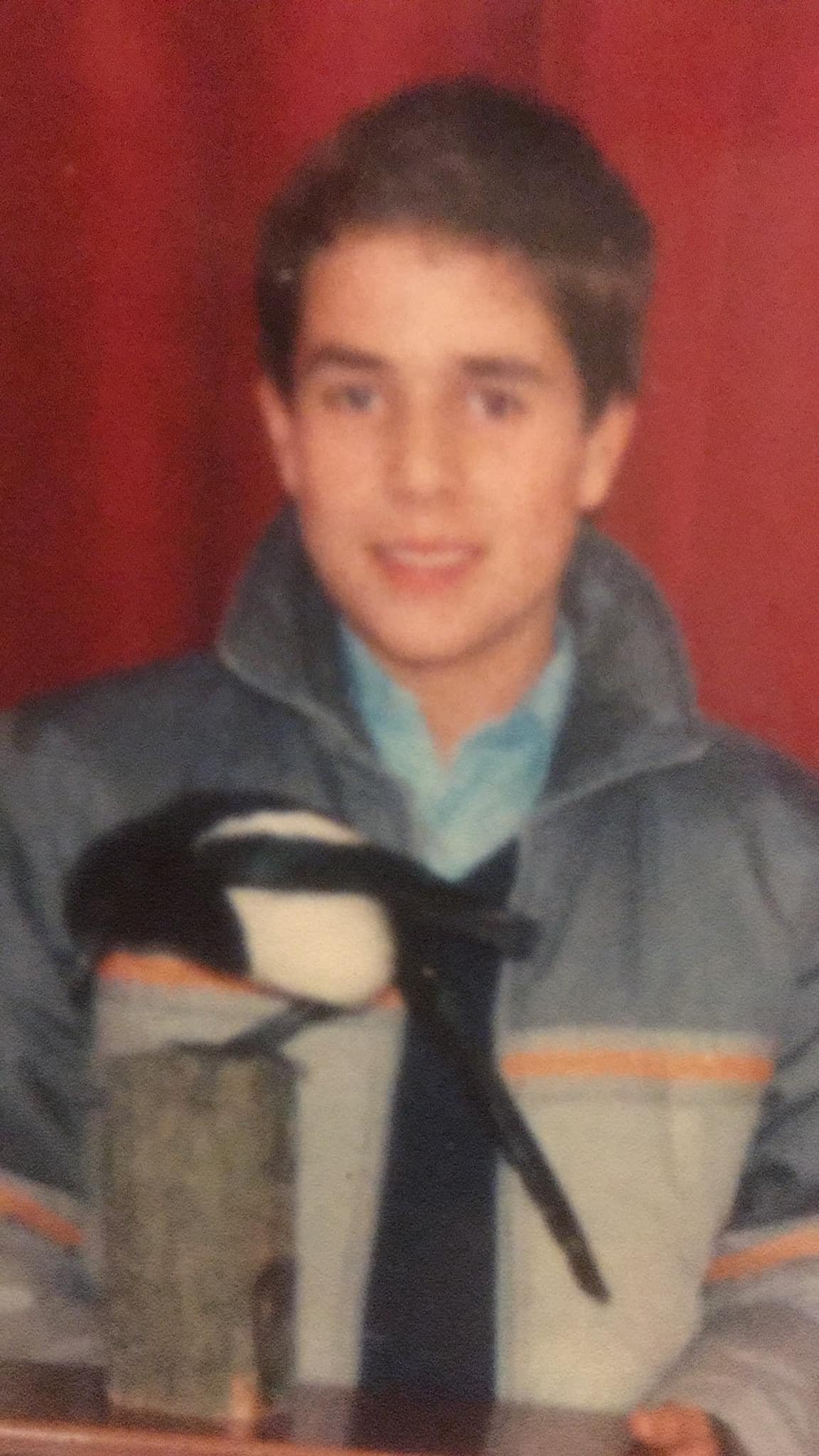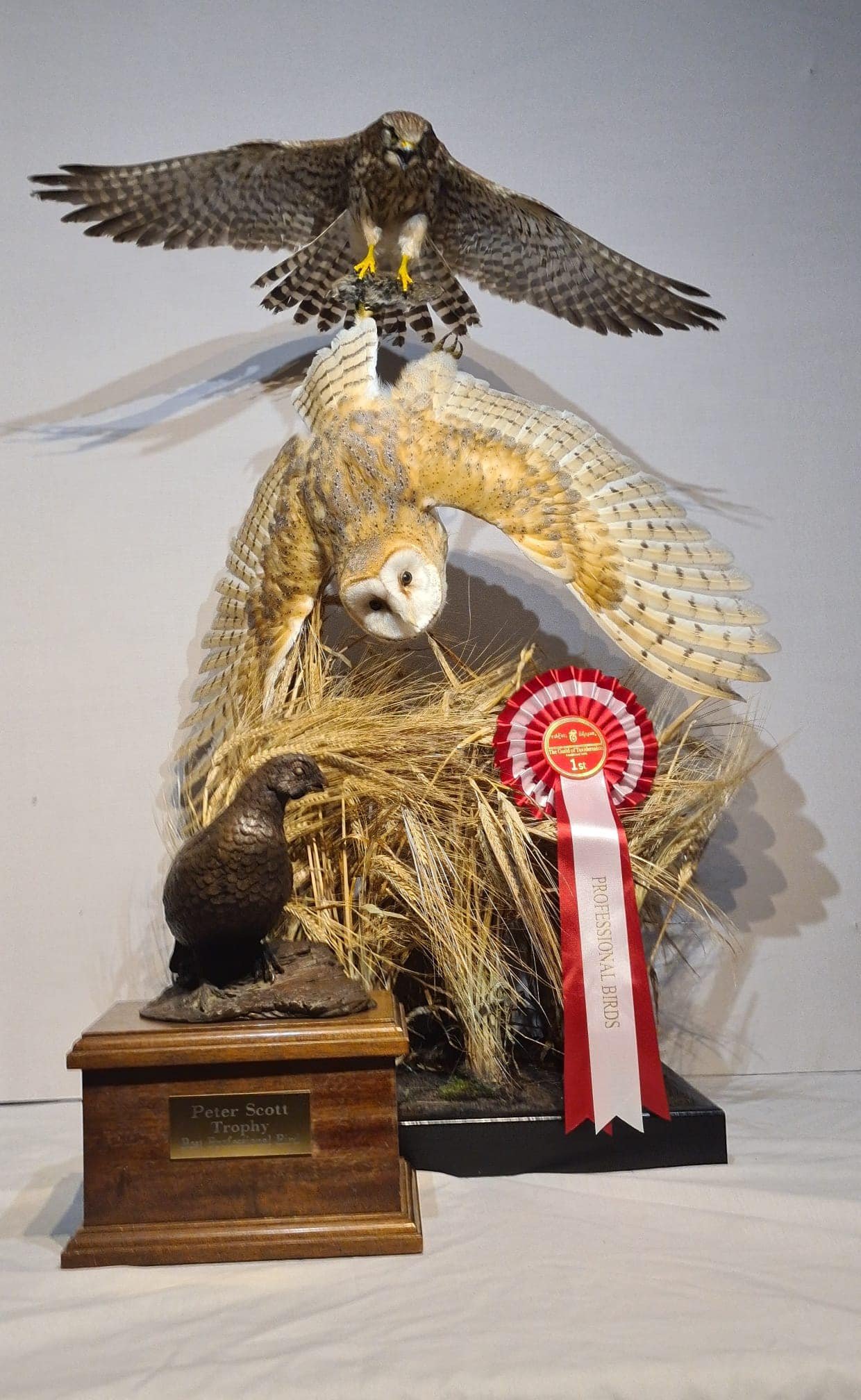About
My Journey into Taxidermy and Wildlife Art
My passion for wildlife, conservation, and natural history has been an integral part of my life since childhood. As early as I can remember, my school art books were filled with drawings and paintings of birds and mammals. A regular after-school destination of mine was the Natural History Hall at Cliffe Castle Museum, where I often found myself gazing at the taxidermy displays, thinking, “I want to be able to do that.” This desire grew stronger over time, particularly as I came across numerous animals and birds that had been struck by vehicles while I was cycling through the countryside. It seemed wasteful to me that these creatures simply decayed, so I began collecting them, often with feathers peeking out from my coat pockets.
A trip to the library introduced me to a number of taxidermy books, and after some focused study, I quickly gained confidence, believing the process wasn't as difficult as I had imagined. After saving up and borrowing equipment, I managed to acquire the basics. My first attempt at preserving a rabbit felt like a huge success. It looked incredibly lifelike and, in my eyes, was a first-class job. However, I quickly learned that decay takes time, and within a week, my prize rabbit began to distort and emit a terrible smell. The reality of taxidermy became clear, and my beloved rabbit was respectfully laid to rest in the garden.
A few months later, during another visit to the museum, I had a breakthrough. Through the workshop windows, I spotted a taxidermist working on birds. My curiosity led to a nervous knock on the fire door, where I met Mr. Derek Farr. Derek, a highly skilled taxidermist and naturalist, generously took me under his wing, teaching me the proper techniques. Though the practical skills he imparted were invaluable, it was his focus on observing the natural world and understanding a specimen before working on it that made the greatest impact. This, I believe, is the key difference between good and mediocre taxidermy. Without a deep knowledge of the animal or bird in its natural environment, even the most technically skilled work can lack the lifelike quality that makes a mount come alive.
Although I initially aspired to a career in museum taxidermy, economic cuts to public services meant that such positions were no longer available. Instead, I started my working life in the construction industry followed by a career as an arboriculturalist. Despite these career changes, taxidermy remained a passionate hobby, and my enthusiasm for the craft has remained as strong as it was 36 years ago and as my full time occupation for the past several years I’ve essentially come full circle to where I wanted to be all those years ago.
At the age of 15, I entered my first competition at a guild conference. Although my work was very good given my level of experience, I was too young for high level competition wasn’t for me. However, 35 years later, I overcame that hesitation and entered some work into the 2021 UK Guild of Taxidermists Annual Conference. I was thrilled to win Best Mammal and Game Head in the Amateur category, along with a Bird and Mammal Credit, and won the Mammal Challenge with a stoat.
In 2022, I entered work again winning two bird credits at the June Guild Seminar and four awards at the Guild Conference, including Best Professional Bird (flying barn owl), Best in Show (cased snowy owl), and First Place in the Avian Challenge (pheasant). The following year, I earned more accolades, including three credits from the Guild Seminar in May 2023, bringing my total to 10 credits from 14 entries, leading to my accreditation and specialist status for bird taxidermy.
In the 2023 September conference, I placed Second in the Professional Bird category and Third in Professional Mammal (stoat), while also winning the People’s Choice Best in Show for my peregrine, and First Place in the Professional Avian Challenge with a partridge. At the Spring Seminar in 2024, I earned credits for all three of my entries: a pine marten, grey squirrel, and American mink.
Despite facing a challenging 2024, including a burn injury to my hand and the construction of a new studio, I decided to participate in the annual conference. Though I had not prepared competition pieces, last-minute entries still brought success: First Place in Professional Game Head (sika), Third Place in Professional Bird (peacock), People’s Choice Best in Show (peacock), and the Services to the Guild 2024 Award for my contributions as a demonstrator, judge, and committee member.
Looking ahead, I am excited about the new opportunities that the coming year holds and meeting new clients and co tiuembracing fresh challenges in the ever-evolving world of taxidermy and wildlife art.









